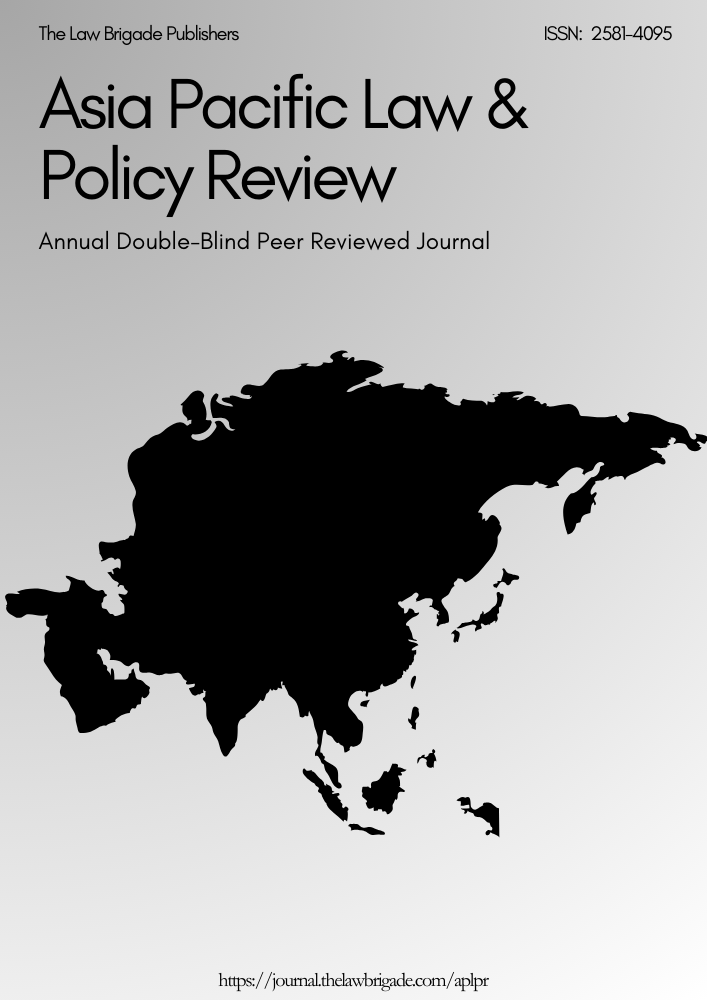PUBLIC-PRIVATE PARTNERSHIP (PPPs) IN ECUADOR AND CHINA
Keywords:
Regulation, development of the economy, Definition of PPSAbstract
Nowadays, many developed and developing countries are opening their doors for the application of the public-private partnerships, more commonly known as (PPPs), which is a model that provides a framework for the delivery of public services. The PPPS is a form of collaboration between the public and private sectors for the purpose of providing public services which have been traditionally provided only by the public sector. In countries, such as Ecuador and China, PPPs projects plays a significant role in the development of the economy. This new relationship between public and private sector can bring benefits and limitations. Hence, the importance of studying this new form that different countries have been taking. This paper will first describe the reasons why PPPs start to be used, definition of PPPs, and its characteristics and functions. Followed by, the history of Ecuador PPPS and its legal framework. As well as, the history in China and the characteristics of the PPPs model. Therefore, this paper will analyze the present conditions of this law in Ecuador and the future trends of the PPPs model application in China.
Downloads
References
• Akitoby,B., Hemming, R., & Schwart, G.(2007). Inversión pública y asociaciones
público-privadas. International Monetary Fund, 40, 1, 30. Retrieved from
file:///C:/Users/aboga/AppData/Local/Temp/ei40s.pdf.
• Baldeón, María. (2016). Las asociaciones público privadas (APP) en el marco jurídico
ecuatoriano. Revista de Derecho, 25, 101-124.
• Bratos M. (2011). La colaboración público privada para la revitalización
socioeconómica de las ciudades ¿un modelo de futuro? Valladolid: Instituto de Estudios
Europeos de la Universidad de Valladolid.
• CAF. (2018). Challenges and opportunities of PPP contracts in Ecuador. Retrieved
• Chinchilla, M.(2006). El nuevo contrato de colaboración entre el sector público y el
sector privado. Revista Española de Derecho Administrativo, No. 132, 609.644.
• Código Orgánico De La Producción, Comercio E Inversiones Act 351 [COPCI]. (2015,
December 18). Retrieved from https://www.aduana.gob.ec/wpcontent/uploads/2017/05/COPCI.pdf.
• Constitución De La Republica Del Ecuador Act 449. ( 2011, July 13). Retrieved from
https://www.oas.org/juridico/pdfs/mesicic4_ecu_const.pdf.
• Gallegos, J. Alianzas Publico- Privadas en Ecuador. Retrieved from
https://cdn2.hubspot.net/hubfs/3781549/Documents/Member%20Articles/EcuadorILP-Global-Alianzas.pdf
• Ley Orgánica de Incentivos para las Asociaciones Público Privadas y la Inversión
Extranjera Act 652 [LOIPP]. (2015, December 18). Retrieved fromhttp://www.puertodemanta.gob.ec/wp-content/uploads/2016/10/LEY-ORGANICADE-INCENTIVOS-PARA-ASOCIACIONES-PUBLICO-PRIVADAS_.pdf.
• Liu, Z & Yamamoto, H.(2009). Public-Private Partnerships (PPPs) in China: Present
Conditions, Trends, and Future Challenges. Interdisciplinary Information Sciences Vol.
15, No. 2 (2009) 223–230
• Manya, M. (2017). Public-Private Partnership (Ppp) And Theorganic Law Of Tax
Incentives in Ecuador. Tax Administration Review Ciat, 4, 1-14, Retrieved from
https://www.ciat.org/Biblioteca/Revista/Revista_42/Ingles/2017_TR_42_manya.pdf.
• Moreno. (2012). Formas jurídicas de colaboración público-privada en el derecho
español: orígenes europeos y evolución de la regulación de los diferentes modelos de
colaboración. Oñati Socio-Legal Series, 2, No. 4, 2012. Retrieved from
https://papers.ssrn.com/sol3/papers.cfm?abstract_id=2043126&rec=1&srcabs=20609
27&pos=3.
• Oleas, D. (2017). Alianzas Público-Privadas y Desarrollo Territorial. Consorcio de
Gobiernos Autónomos Provinciales del Ecuador – CONGOPE . Serie Territorios en
Debate, 6, 1-140.
• Reglamento General de Aplicación de la Ley Orgánica de Incentivos para
Asociaciones Público-Privadas y la Inversión Extranjera Act 786 (2016). Retrieved
from https://www.obraspublicas.gob.ec/wpcontent/uploads/downloads/2017/01/APP_2017_MTOP_ESP_DECRETO-1040-
REGLAMENTO-DE-APP.pdf.
• Robalino, J. (2010). Los asociaciones público-privadas (APP): una opción para
contratación administrativa en Latinoamérica. Revista de Derecho, No.13, 97-108.
• Thieriot, H & Dominguez, C. (2015). Public-Private Partnerships in China On 2014 as
a landmark year, with past and future challenges. The International Institute for
Sustainable Development. Retrieved from
https://www.iisd.org/sites/default/files/publications/public-private-partnershipschina.pdf
• Vera, X. (2017). Asociaciones público-privadas y concesiones administrativas.
Retrieved from http://repositorio.usfq.edu.ec/bitstream/23000/6756/1/132442.pdf.
• Vieitez, M. (2016). Diplomado en Asociaciones Público Privadas para el desarrollo de
infraestructura y servicios. Tecnológico de Monterrey.
• Ysa, Tamyko. (2009). La gestión de partenariados público privados: tipologías y retos
de futuro. En La colaboración público-privada y la creación de valor público. Colección
Estudios. Retrieved from http://www1.diba.cat/llibreria/pdf/46550.pdf.
• Zhong, L. (2019). An introduction to public-private partnerships in China. The Laws
Review. Retrieved from https://www.lexology.com/library/detail.aspx?g=8f30fb7ce806-4403-90c8-13107381077e.
Downloads
Published
Issue
Section
License

This work is licensed under a Creative Commons Attribution-NonCommercial-ShareAlike 4.0 International License.
License Terms
Ownership and Licensing:
Authors of research papers submitted to any journal published by The Law Brigade Publishers retain the copyright of their work while granting the journal specific rights. Authors maintain ownership of the copyright and grant the journal the right of first publication. Simultaneously, authors agree to license their research papers under the Creative Commons Attribution-ShareAlike 4.0 International (CC BY-SA 4.0) License.
License Permissions:
Under the CC BY-SA 4.0 License, others are permitted to share and adapt the work, even for commercial purposes, provided that appropriate attribution is given to the authors, and acknowledgment is made of the initial publication by The Law Brigade Publishers. This license encourages the broad dissemination and reuse of research papers while ensuring that the original work is properly credited.
Additional Distribution Arrangements:
Authors are free to enter into separate, non-exclusive contractual arrangements for distributing the published version of the work (e.g., posting it to institutional repositories or publishing it in books), provided that the original publication by The Law Brigade Publishers is acknowledged.
Online Posting:
Authors are encouraged to share their work online (e.g., in institutional repositories or on personal websites) both prior to submission and after publication. This practice can facilitate productive exchanges and increase the visibility and citation of the work.
Responsibility and Liability:
Authors are responsible for ensuring that their submitted research papers do not infringe on the copyright, privacy, or other rights of third parties. The Law Brigade Publishers disclaims any liability for any copyright infringement or violation of third-party rights within the submitted research papers.


